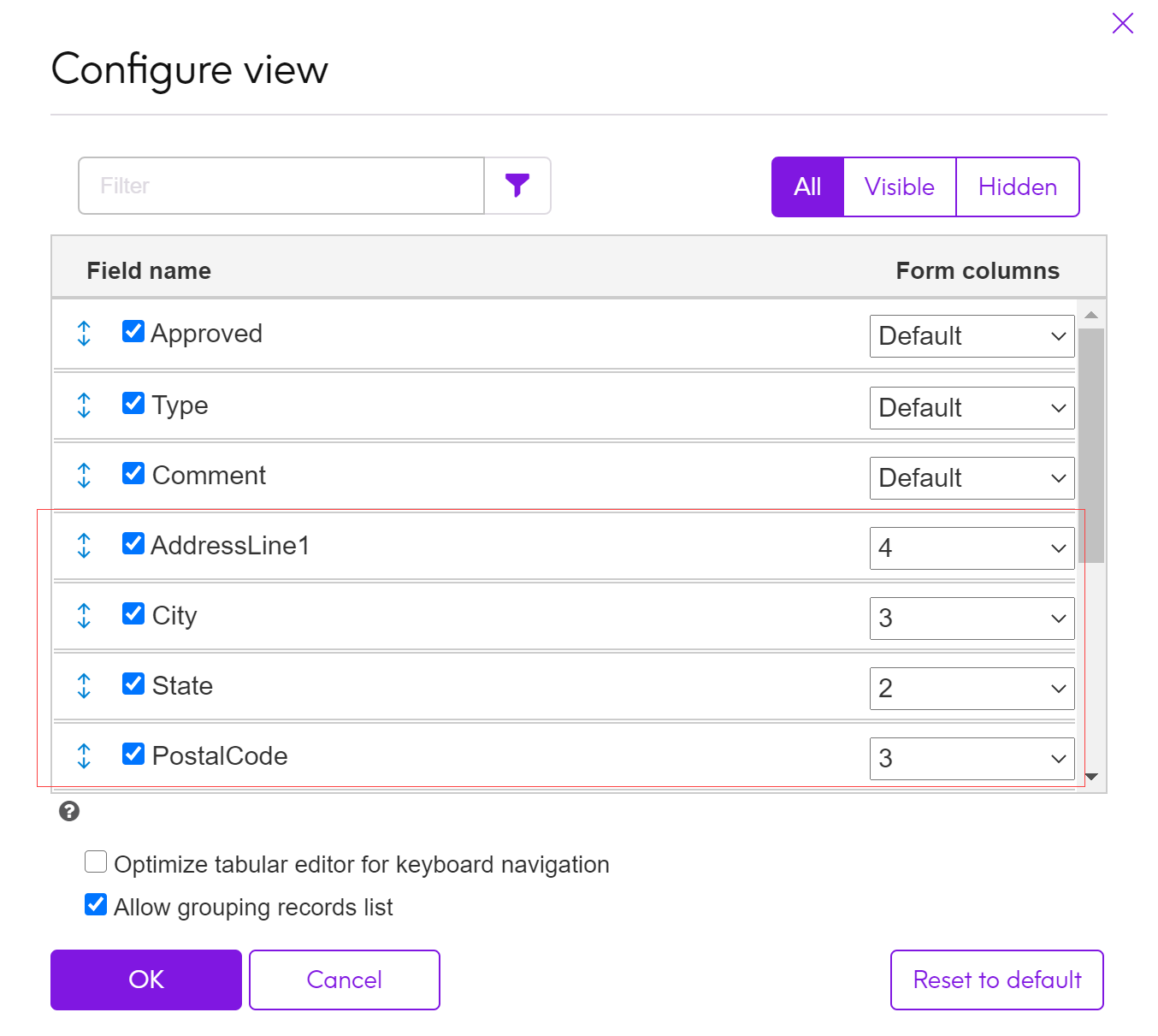Configuring the view
You can select which fields appear and change the order in which they appear by clicking the Configure view button ![]() . This displays the Configure view options.
. This displays the Configure view options.
Changes to the Configure view settings are saved for a user and dataflow name, so that when you reopen a dataflow the configuration from the previous session is applied. Changes made here apply to editing records in both Tabular view and Form view.
- Filter
- Enter all or part of a field name in the Filter box
 to only display field names that contain the entered characters in their names. The search is case insensitive and the text can be anywhere in the name of a field.
to only display field names that contain the entered characters in their names. The search is case insensitive and the text can be anywhere in the name of a field. - All
- List all fields. Check or uncheck a field to expose or hide it in both Tabular view and Form view.
- Visible
- Lists fields that are currently checked in the Field name column.
- Hidden
- Lists fields that are currently not checked in the Field name column.
- Display Condition name field
- In the Field name column, check a check box to display a column in both Tabular view and Form view. This field displays the name of the condition that caused the record to be added to the repository. Records that meet criteria for multiple conditions will display condition names as a comma separated list.
- Change field order
- The fields are listed in the Configure view dialog box in the same order that they are displayed in the records table. You can change the order in which fields appear by dragging and dropping fields in the desired order. However, you cannot rearrange fields while there is text in the Filter box
 . You must first clear the contents of the Filter box before you can reorder fields.
. You must first clear the contents of the Filter box before you can reorder fields. - Configure field widths
- You can specify the width of columns that appear in the Form view by entering values in the Form columns boxes. Values for adjacent visible fields in this column must sum to 12. For example, if you wanted four fields to be placed side-by-side in four equal-length fields on a single row, you could give each field a column width of "3." Likewise, if you wanted to include just two fields of equal length in a row, you could enter "6" for both fields under Form columns. These proportional settings are is illustrated in the first figure, Figure 1. The fields in the figure are set to 4, 3, 2, and 3 to define four adjacent fields of various widths that sum to 12. The second figure, Figure 2, shows the result from Form view.


Note: When you configure field widths under Format columns, the configured fields will no longer be responsive to the size of the browser window. In contrast, fields with the Default setting are always responsive to the size of browser window, wrapping and unwrapping when the window is resized.
- Enable Keyboard Navigation
- Check the Optimize tabular editor for keyboard navigation check box to use the Tab key to navigate records in the Tabular view of the Data Stewardship Portal Editor page.
- Group records in Tabular view
- Check the Allow grouping records list check box to group records by their column values. This displays a panel above the column headings in which to configure groupings. Records may be grouped hierarchically in descending or ascending order on a page by values in one or more columns. This check box is checked by default. For more information, see Grouping records.
- Reset to Default
- Click the Reset to default button to check all of the check boxes in the Field name column and to set Form columns to "Default".